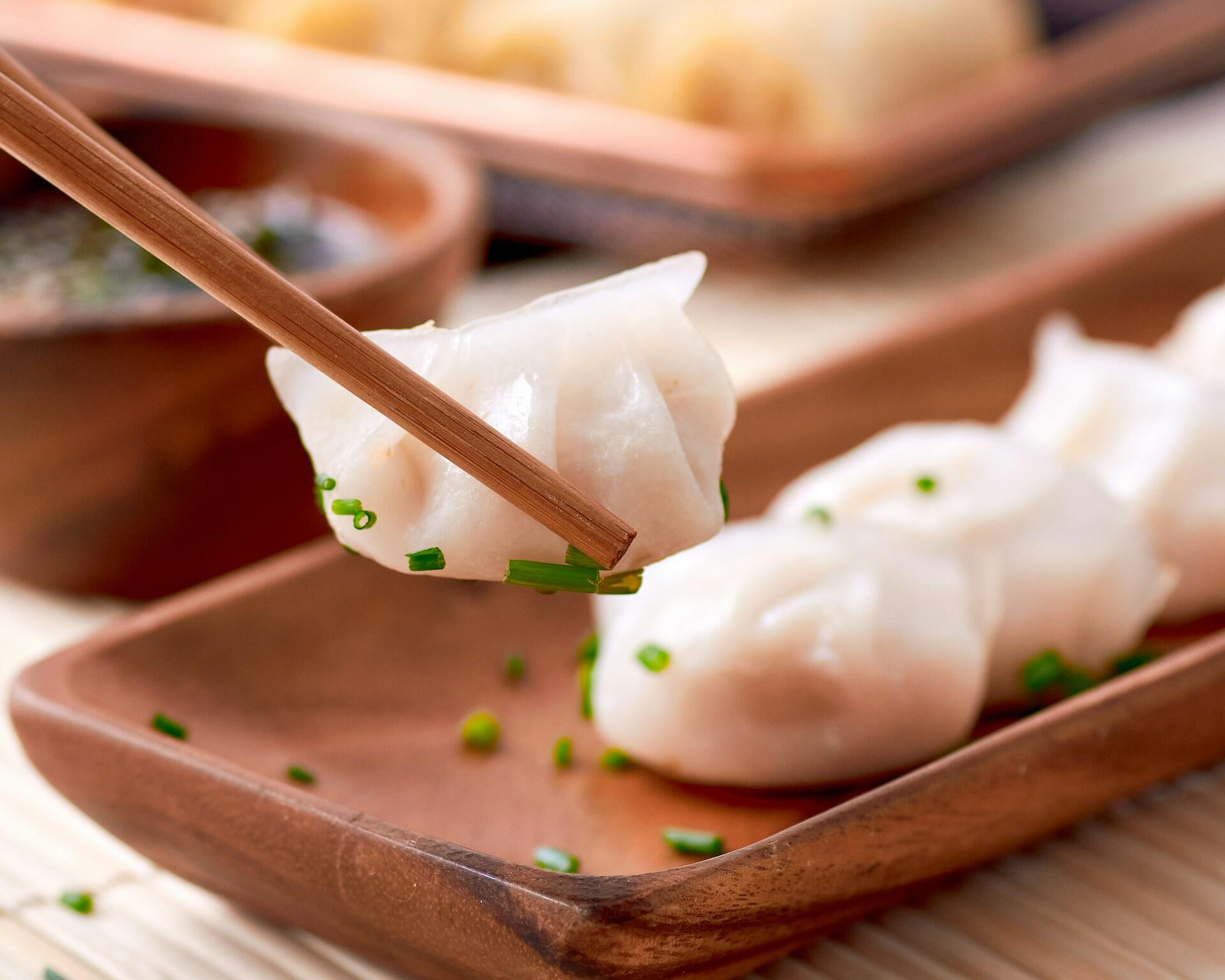好吃吗? - hao chi ma? (Is it tasty?)
Traditional table talk in Mandarin
Chinese cuisine offers up an endless variety of tastes, textures, and flavors. Best of all, no dish is reserved exclusively for holiday celebrations. Once you master cooking these foods, you can have them year-round. To properly prepare your Chinese New Year menu, you should know what each dish represents:
| 🍜Dish | 🌏Where it's from | 🍀What it represents |
|---|---|---|
| Dumplings 饺子 - jiǎo zi | Northern China | Wealth |
| Fish 鱼 - yú | Coastal regions | More prosperity |
| Spring rolls 春卷 - chūn juǎn | Southeastern China | Weath |
| Chicken (whole) 鸡 - jī | Universal, with many regional variations | Wholeness, togetherness |
| Sweet rice balls 汤圆 - tāng yuán | South China | Family togetherness |
| Longevity noodles 长寿面 - cháng shòu miàn | Northern China | Long life and happiness |
| Lion's Head meatballs 狮子头 - shī zi tóu | Southeast China | Family unity |
| Steamed pork belly 红烧肉 | Southern China | Prosperity |
| Shrimp 虾 - xiā | Canton and Guangdong | Happiness |
| Niangao 年糕 | Universal, with many regional variations | Higher position or income |
| Chinese ’broccoli‘ 芥兰 - jiè lán | Southeast China | Harmony |

Food for Chinese New Year
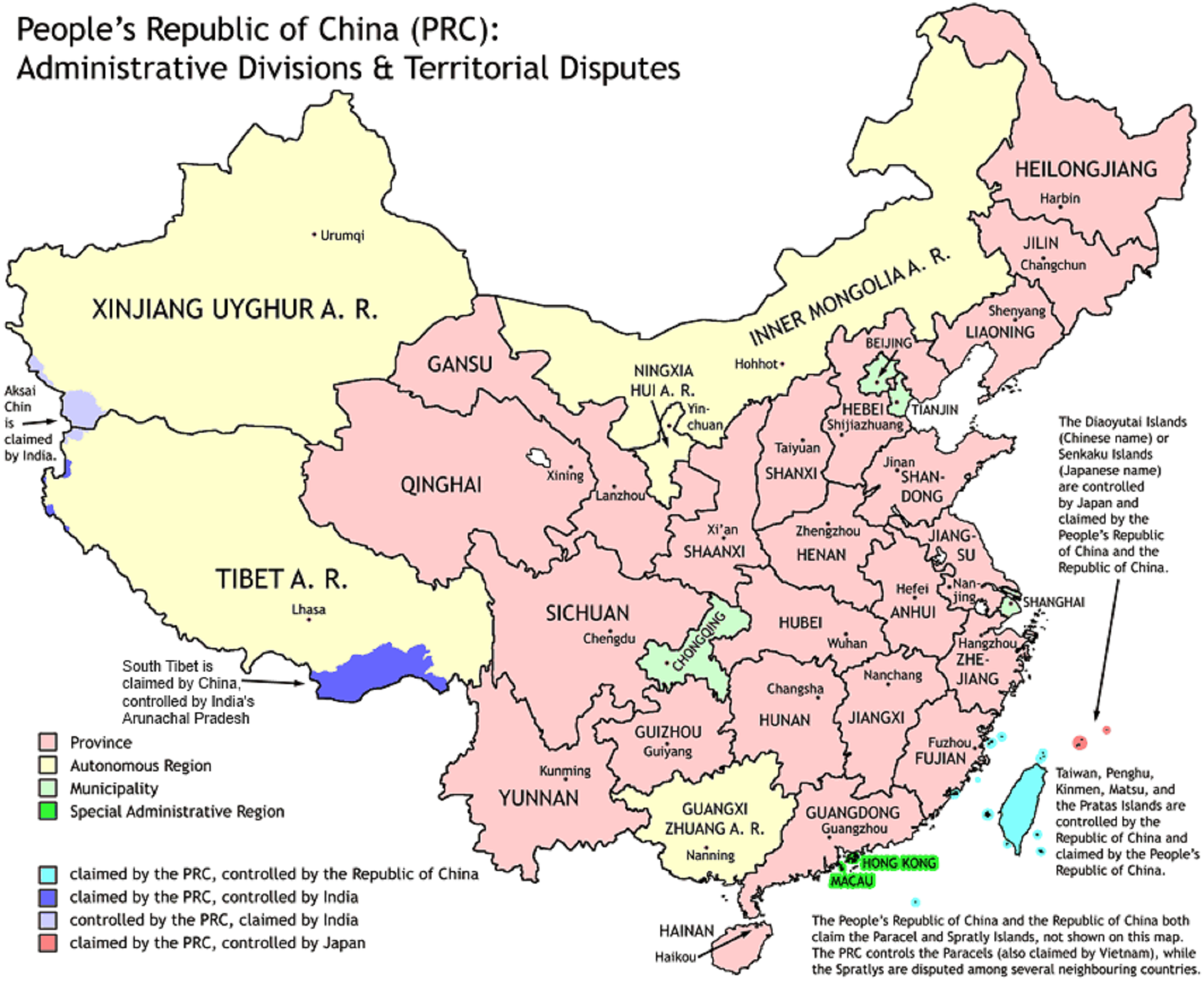
China is a vast land with many climates, growing regions, and appetites. It's home to 56 ethnic minorities, who all live among the Han majority. Each of these peoples has their own culture and traditions, including foods for celebrations.
Zooming out, we find that all this cultural and culinary diversity helped form China's Eight Great (cooking) Traditions (八大菜系- Bā dà cài xì). They are:
- 粤菜 - yuè cài (Guangdong province) focused on original flavors
- 川菜 - chuān cài (Sichuan province): spicy, bold, and nutty
- 徽菜- huīzhōu cài (Anhui province): heavy on vegetables and wild herbs
- 鲁菜 - lǔ cài (Shandong province): wide variety of ingredients and cooking methods
- 闽菜 - mǐn cài (Fujian province): earthy, heavy on seafood, often soup dishes
- 苏菜 - sū cài (Jiangsu province): meat-heavy, savory flavours
- 湘菜 - xiāng cài (Hunan province): fresh, spicy, colorful
- 浙菜 - zhè cài (Zhejiang province); mellow flavor, gentle fragrance, not greasy/oily
With all this in mind, it's unreasonable to assume that all Chinese people, across the country, eat the same Chinese New Year dishes. That would be like saying everyone in the US eats ham - for their Christmas dinner, or some other special occasion.
Within these eight cuisines, we find a variety of dishes for any Chinese New Year meal. As we reveal our selections, we point to their origins, and highlight regional variations.
The Top Chinese New Year Food for Wealth
Well-made dumplings typically feature decorative folds along their edges, but you don't have to get fancy. Simply folding them over and making sure they stay sealed is good enough for your first try.
Making dumplings (包饺子 - bāo jiǎo zi) is a family affair.
Everyone gets in on the fun!
Before you start 'building' your dumplings, put a large pot of water on the stove to simmer. Once you have wrapped all the filling, turn the heat up a bit, and drop six-eight dumplings into the water.
Let them boil until they rise to the surface. Allow them to cook another two minutes; scoop them out with a strainer. Serve them with a soy sauce-vinegar dipping mix.
Eating dumplings is a Lunar New Year tradition across China. In fact, one should eat them every day - steamed, boiled, or fried. The more you eat, the more wealth you attract!
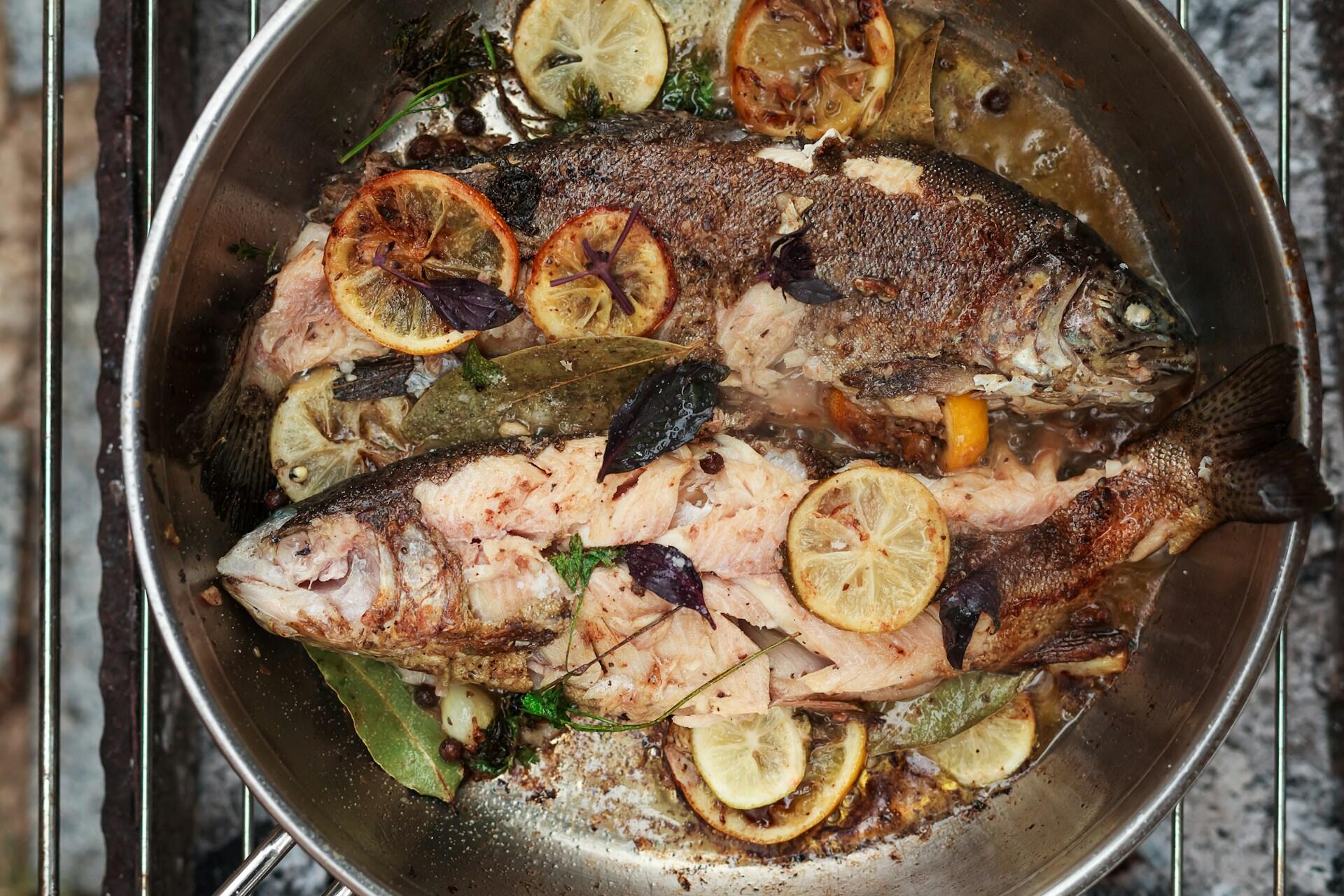
Chinese New Year Recipes for Fish
You'll find as many ways to cook fish in China as there are provinces, ethnicities, and cuisines. Steaming the fish is, far and away, the most popular cooking method. However, what's more important is heeding the rules to maximize this holiday food's blessings.
- It must be cooked and served whole: head, tail, fins, and all (minus entrails!)
- The fish's head must point to the eldest, or most venerated person at the table
- That person must be the first to take a morsel of the fish
- After the feasting, there must be some fish leftover, to be eaten the next day.
In some regions, the head and tail must be saved for the next day's meal. That's a sign that the next year will begin and end with prosperity.
Flipping the fish to access the other side's meat means flipping your luck and prosperity away.
That being the case, how to access the rest of the meat? With a bit of practice, you can train your chopsticks to navigate around the fish bones.
Chinese New Year Snacks to Bring Wealth
As the filling cools, mix the cornstarch and water to form a paste that will seal the rolls. Unpack the wrappers, carefully peel one off and lay it smooth side down. Heap one generous spoonful of cooled filling in the middle of the wrapper, and spread it out.
Wrap the filling, tucking the ends as you wrap. Use the cornstarch/water mix to seal the roll.
Once you've rolled them all, coat your frying pan with oil, and heat. Once hot, place 4-5 rolls in the pan, turning them when the exposed side is golden brown. Serve hot or cold, with Thai sweet chilli sauce for dipping.
In Chinese, these treats are called 春卷 chūn juǎn. Spring roll is a literal translation.
These treats became popular in Southeast China: Shanghai, Shenzhen, Hong Kong, and other coastal areas. "A ton of gold!" (黄金万两 - huáng jīn wàn liǎng) is the proper Chinese New Year wish to speak when eating these delicious treats.

Chicken for Chinese New Year Dinner
Across China, a whole chicken - head, feet, and all, adorns every Lunar New Year celebration table. Regional cooking and seasoning variations exist, but boiling the bird is the standard cooking method.
A whole chicken on the table, from the comb to the claws, represents wholeness. Furthermore, the Chinese word for chicken, 鸡 - jī, is a homophone for luck and prosperity (吉 - jí), but for the tone. So, this boiled bird delivers double blessings!
In Chinese culture, meat is a symbol of wealth and vitality.
Ahead of Spring Festival, Chinese neighborhoods are festooned with cured meats (腊味 - là wèi). This serves the dual purpose of drying the meat ahead of celebrations, as well as putting wealth on display.
Chinese New Year Meatballs for Family Unity
Once completely seared, braise them with chopped Napa cabbage and mushrooms, if desired. Cooking time should last until the vegetables are soft; about 20-30 minutes. You may serve your Lion's Head meatballs in their broth, or separately, on a plate, with baby bok choy as a garnish.
This tempting dish has its roots in Shanghai's kitchens. Elsewhere in China, they are typically served plain.
However, Shanghai cuisine is slightly sweet, so drizzling a sticky-sweet sauce on them before serving hews to the original recipe. Sweet or plain, Chinese New Year dinner wouldn't be the same without them!
Easy Chinese New Year Recipes: Chinese Broccoli
The Chinese diet features lots of greens. Although meats take pride of place, green vegetables provide a nice contrast. Chinese 'broccoli' (芥蓝 - jiè lán) is particularly well-suited to the task.
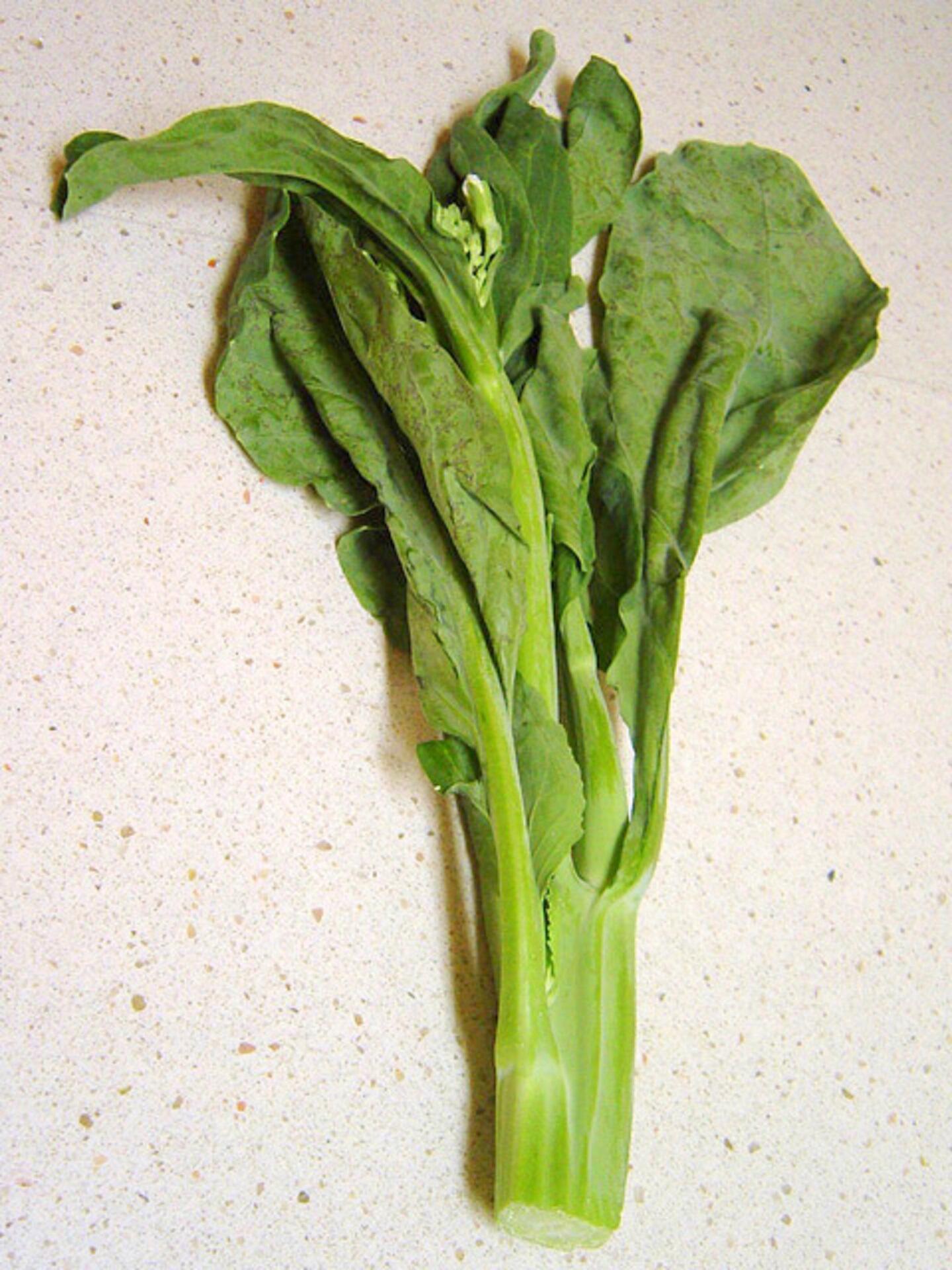
Its broad leaves and thick stems deliver just the savory crunch this meal demands. Even better: you have two ways to prepare it:
Boiling
- Wash the leaves
- Place them in boiling water
- Add salt, and a tablespoon of oil (to preserve color)
- Boil for 2-3 minutes, until the stems are slightly soft
- Remove, and drizzle with oyster sauce
Stir-frying
- After washing, cut the leaves diagonally
- Heat pan/wok with 1/2 in. oil
- Sauté sliced garlic and ginger
- Add chopped leaves, stir-fry till leaves are wilted
- Scoop them out, drizzle with oyster sauce
The variety of foods that tables bear during Spring Festival is one reason this holiday is so special. Though meats dominate, fruits and veg have their place, too. This traditional Chinese New Year food complements your Lunar New Year celebration!
Chinese New Year Food Ideas
Our table, in the introduction, shows 12 popular foods people eat for Lunar New Year. Of course, Chinese people enjoy a much broader range of dishes. We limited ourselves to 12, because that reflects the number of animals in the Chinese zodiac.
Among perennial favourites, we also find:
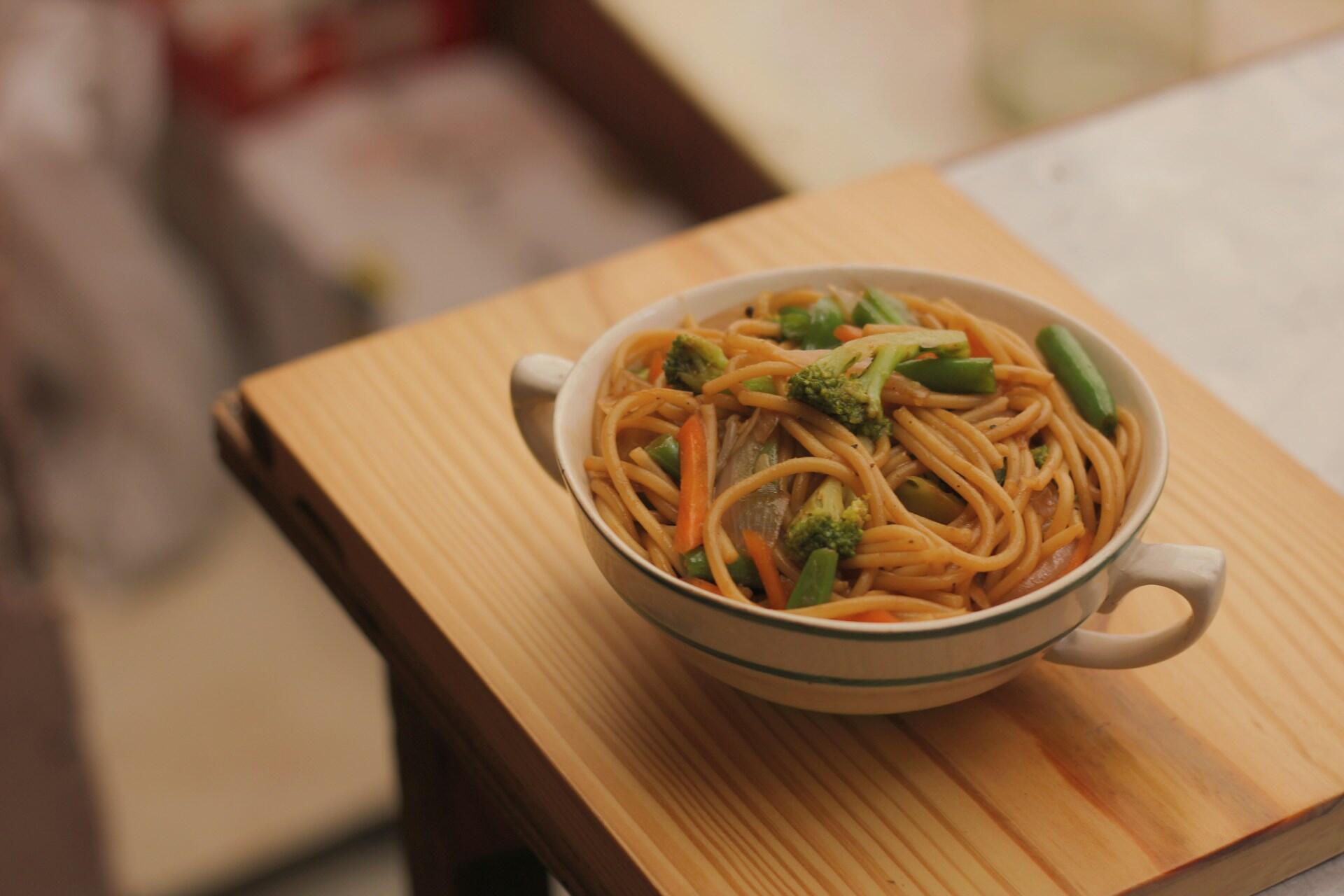
- Longevity noodles 长寿面 - chángshòu miàn
- Speciality of Northern China
- Very long noodles
- Can be a soup or stir-fried
- Bring happiness and long life
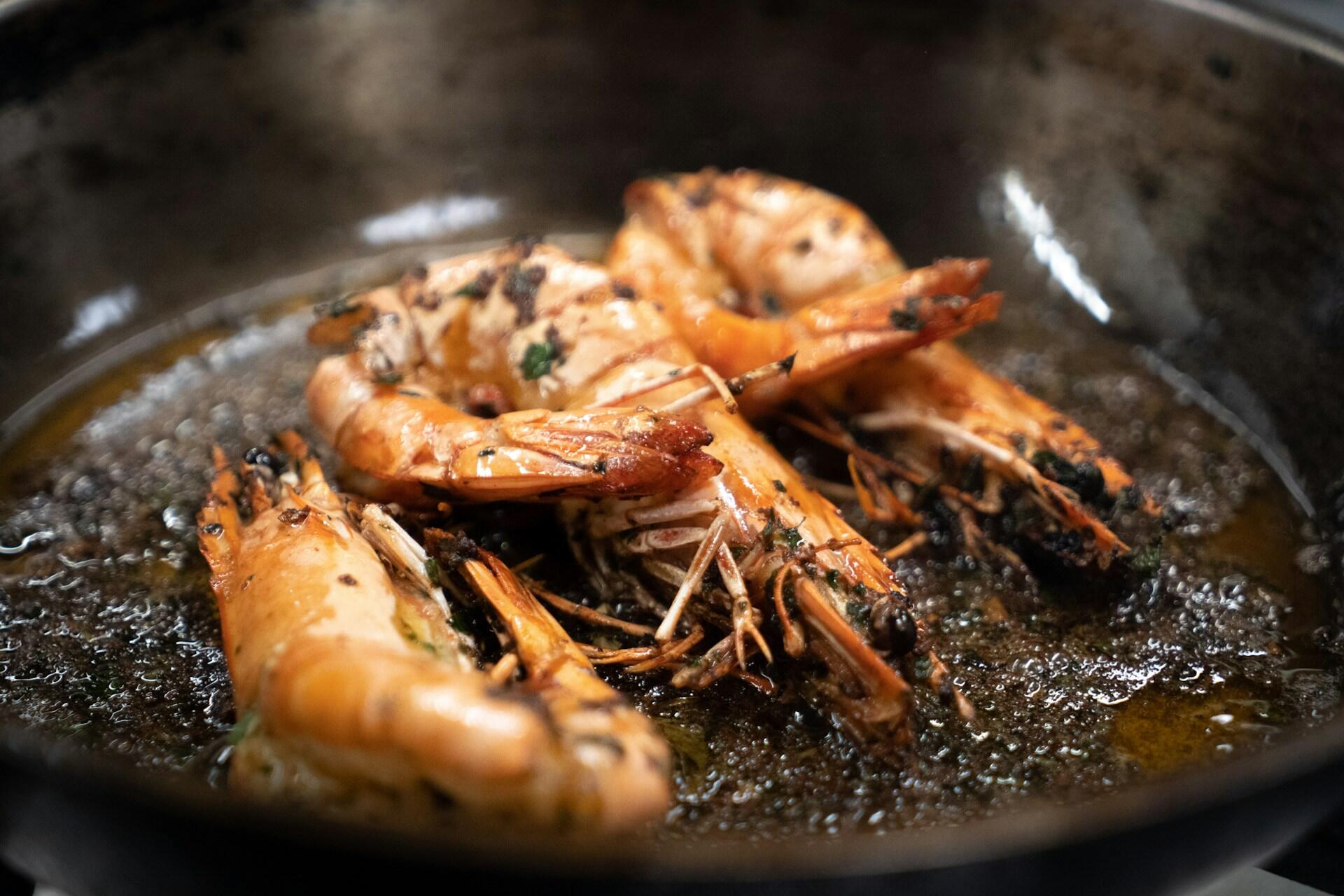
- Shrimp 虾 - xiā
- Popular along the Southeast coast
- Can be fried or boiled
- Represent liveliness and happiness
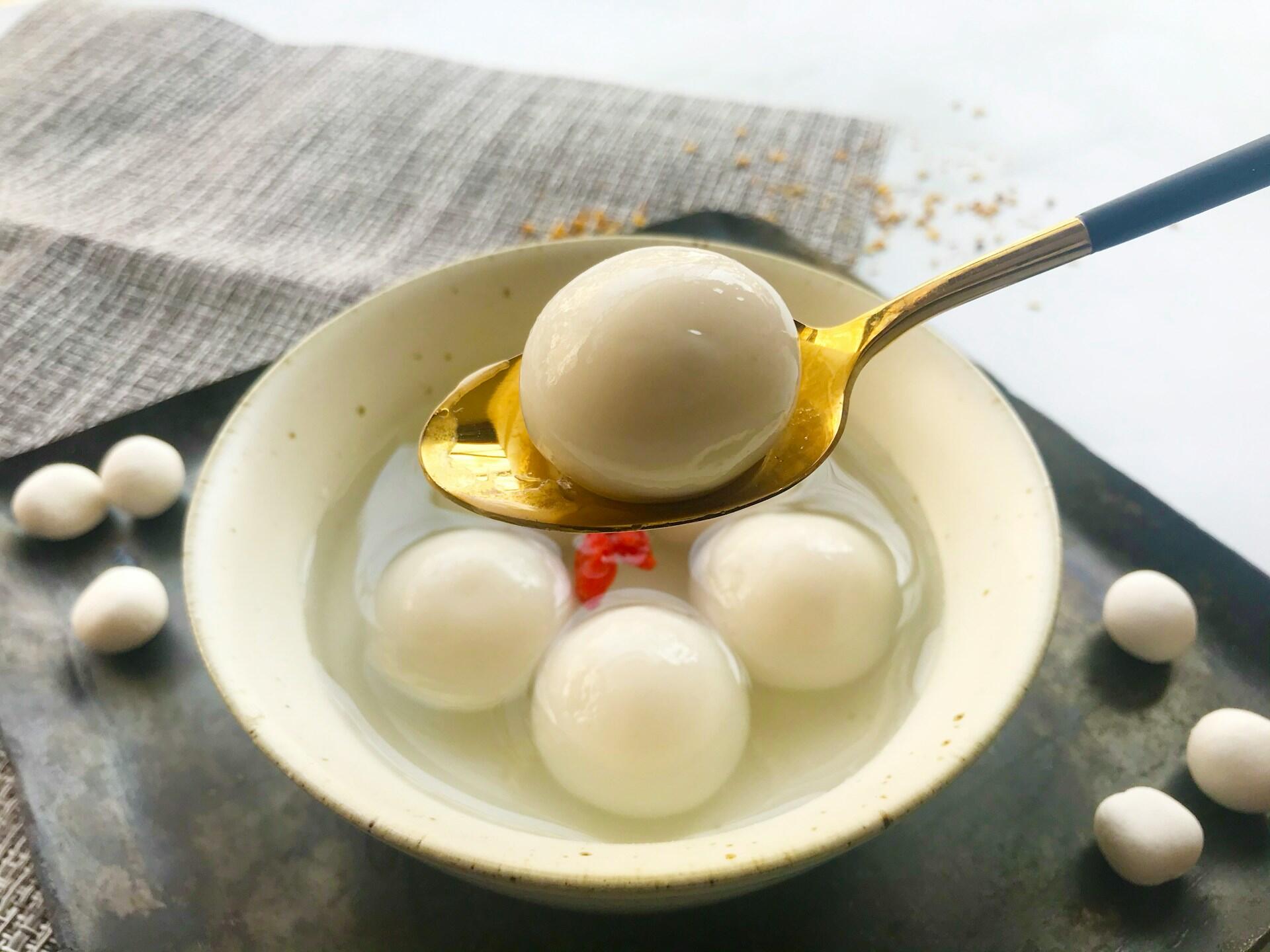
- Sweet rice balls 汤圆 - tāng yuán
- Original to Southern China
- Glutinous rice with fruit filling
- Buy them ready-made, and boil them
- Symbolize family togetherness
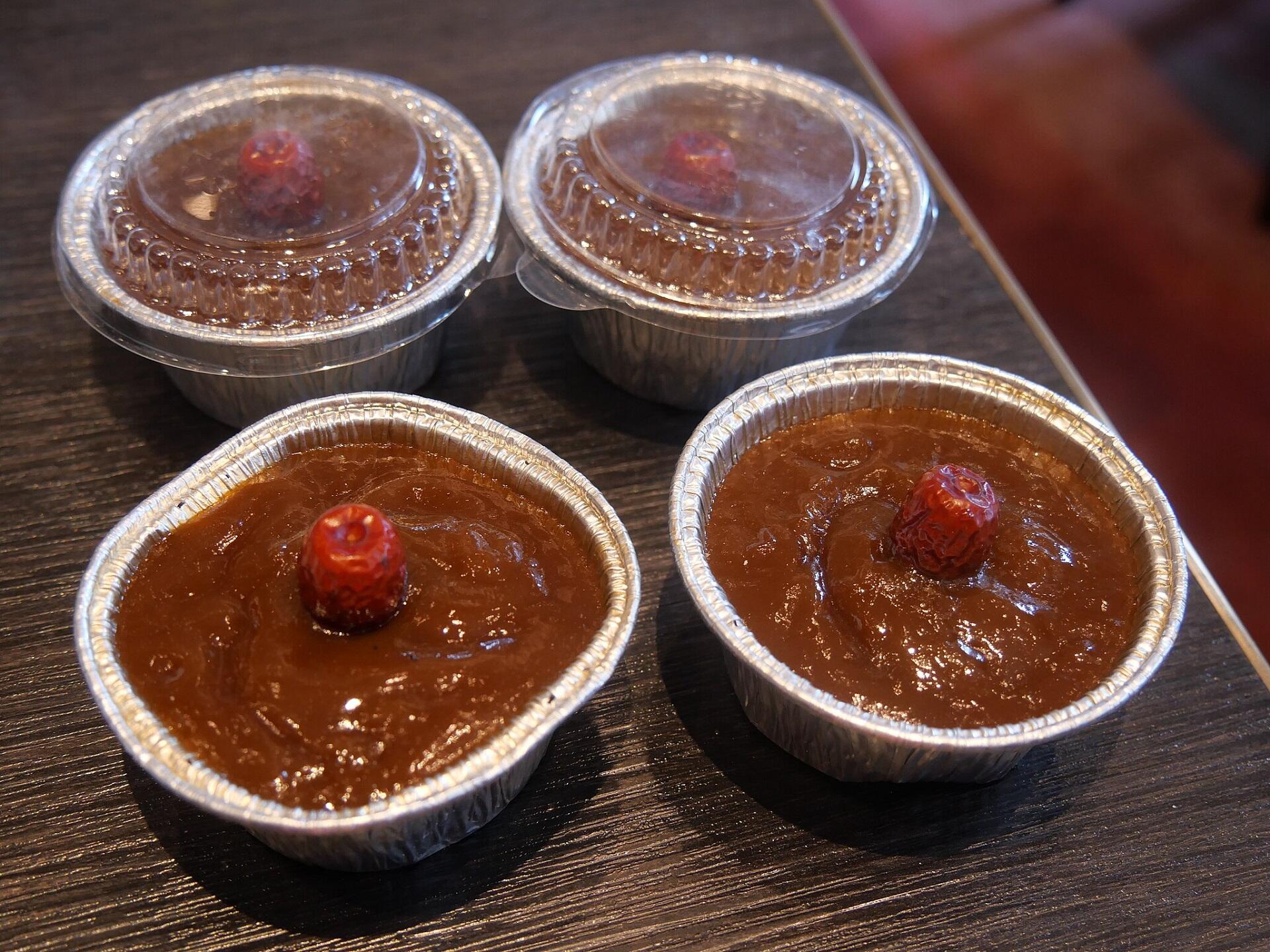
- New Year cake 年糕 - nián gāo
- Glutinous rice cake
- Standard for Lunar New Year's Eve meal Flavored with lotus, chestnuts, dates, sugar
- Symbolizes growing prosperity
What Do People Eat on Chinese New Year?
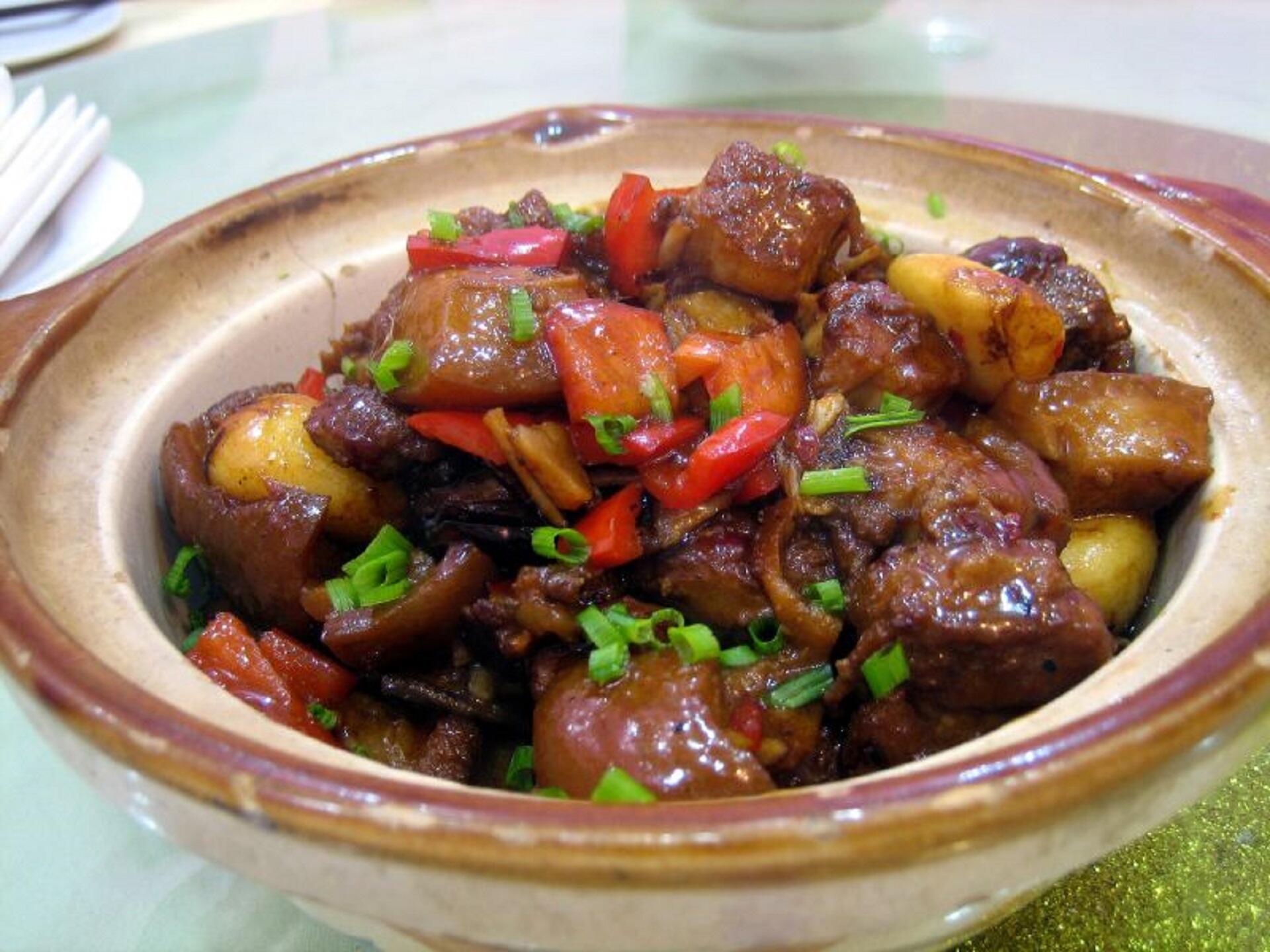
We know this delicious dish as Shanghai braised pork (红烧肉 - hóng shāo ròu), among other names. It too originated in Shanghai kitchens; it is this writer's hands-down favorite.
To make it, you need a slab of pork belly with a generous ratio of fat. You also need ginger, garlic, star anise, caster sugar, soy sauce, and a touch of Shaoxing rice wine.
First, dry your pork slab, and then cut it into largish cubes and brown them in oil. Take them out of your pan/wok, and add sliced ginger, some water, and the rest of the ingredients. Bring them to a boil, then turn the flame to simmer. Add the pork, and cover the mixture.
Watch this instructional video as it stews until the liquid is nearly gone, and the meat is tender. Scoop the meat out, and drizzle the remaining liquid over it.
Shanghai braised pork is available to eat year-round, like the rest of these foods. However, during Lunar New Year, this dish becomes a symbol of prosperity and abundant blessings.
To Western cultures, it's a little-known fact that foods take on special meaning in China, during the holidays. Still, it's a poetic way to ring in the New Year, don't you think?

